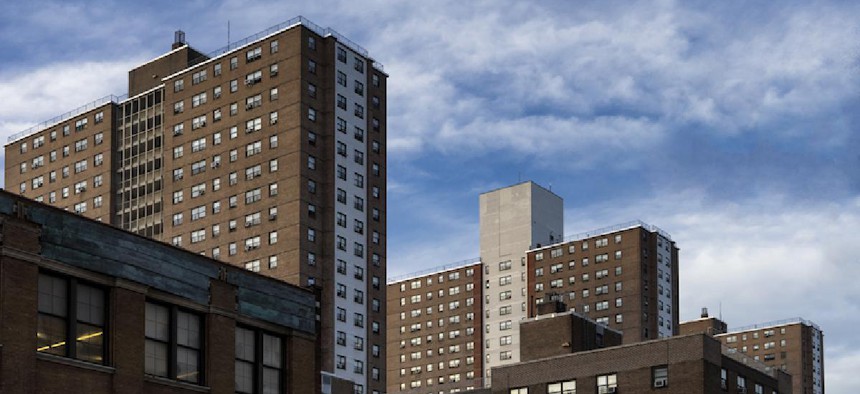In last week’s $156 billion budget deal, Gov. Andrew Cuomo and the state Legislature failed to allocate a single dollar to the New York City Housing Authority. Given NYCHA’s $17 billion in unfunded capital needs, it was a disappointing and severe oversight. Without adequate funding from the state, many of the authority’s 400,000 tenants will continue to reside in crumbling buildings with abysmal living conditions.
It’s time for the governor and Legislature to commit to upgrading the authority’s aging building stock and ensure that state funds are actually dedicated for its most important long-term needs, like repairing roofs and façades – and not for playgrounds, landscaping and other legislator pet projects.
The need is clear. Sixty percent of NYCHA’s buildings have stood for over 50 years. Many have suffered through decades of neglect. By 2019, the gap between planned capital investment in NYCHA’s buildings and the funding needed to fully repair its housing stock will reach a staggering $16.9 billion.
Underinvestment in building exteriors and roofs will account for $4.9 billion of this gap. Of NYCHA’s 2,600 buildings, a staggering 1,500 do not comply with Local Law 11 standards for exterior and façade conditions. Leaking roofs and crumbling brickwork are common, increasing maintenance expenses and damaging the health of NYCHA residents.
When building exteriors are in disrepair, problems quickly multiply. Water infiltration, for instance, is a major issue across the NYCHA portfolio. As roofs and windows leak, problems spread to the interior. Sheet rock crumbles, leaving holes in walls and collapsed ceilings. Mold follows, compromising air quality. A quarter of the children living in public housing suffer from asthma – nearly twice the rate among New York City youth.
Moreover, cracks in façades and poor insulation inflate utility costs. Cool air seeps out in the summer and cold air sneaks in during the winter, forcing residents to keep their air conditioners and heaters running at full blast. Repairing and modernizing building envelopes will keep electric and gas expenses down, alleviating NYCHA’s growing operating deficit.
Last year, the state appeared to take an important step to help address NYCHA’s capital deficit when Cuomo and the Legislature approved a one-time outlay of $100 million. In preparation for this infusion, the authority planned to replace roofs in 123 buildings.
Unfortunately, rather than allow NYCHA to address its most pressing needs, the governor’s office recommended that the $100 million be divided into $2 million increments and asked local Assembly members to submit proposals for small-scale projects. Instead of replacing roofs and façades, money would be directed toward lighting improvements, landscaping, playground equipment, security cameras, stoves and refrigerators – all worthy investments, but ones that would fail to address larger, systemic issues.
When these systemic issues are not addressed, thousands of low-income New Yorkers suffer. NYCHA provides shelter and services to over 400,000 public housing residents, a population larger than New Orleans and twice the size of Salt Lake City. While NYCHA rents are stable and secure, its buildings are not. Without significant investment from the governor and Legislature, residents will continue to endure substandard conditions.
When government officials underfund NYCHA and earmark the limited outlays they provide, they prevent the authority from addressing the highest priority needs. This interference is a recurring theme in NYCHA’s history; a defect embedded in its original DNA. While its first chief architect, Frederick Ackerman, advocated for garden apartments at Williamsburg Houses and subsequent sites, he was overruled by state and city officials and prominent architectural theorists of the time. While the garden apartment buildings so prevalent in Sunnyside and Jackson Heights are still recognized as the paragon of low-rise, high-density urban housing, the “Tower in the Park” model that would emerge has been roundly criticized for isolating residents from their surrounding communities and enabling high crime rates.
State legislators now have the opportunity to make a meaningful impact on the lives of 400,000 low-income New Yorkers. An opportunity to put trust and to build trust in what is widely considered the best managed public housing authority in the nation. After decades of underfunding, the state should commit $500 million without strings attached, allowing NYCHA to make the roof, façade, and long-term capital repairs that its residents need and deserve.
Adam Forman is a senior researcher at the Center for Urban Future and has authored several reports for the Center on topics ranging from the arts economy to city infrastructure.


